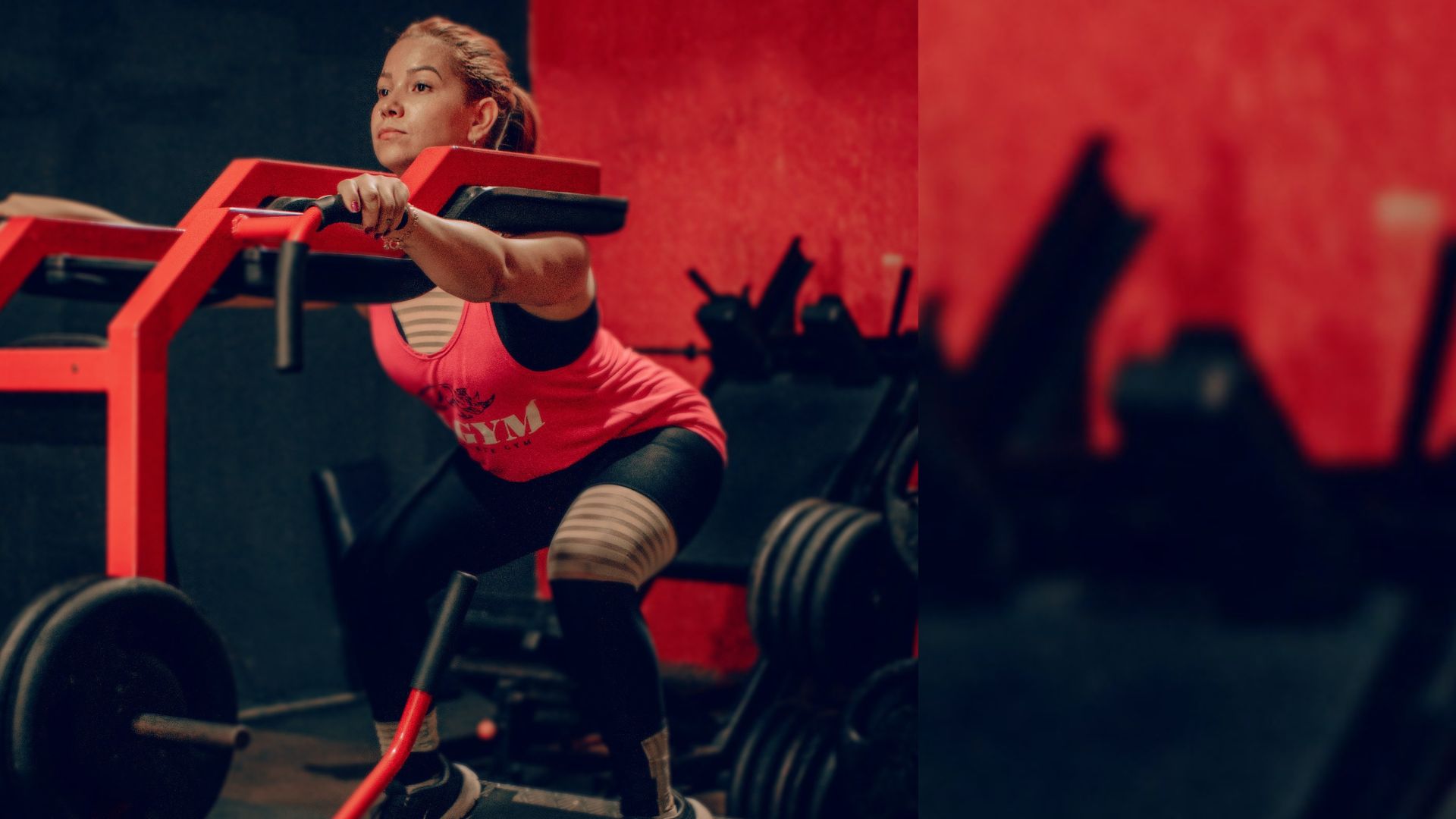Are you wondering how much you should squat if you weigh 151 pounds? Squatting is a popular exercise that can help you build strength and muscle in your lower body.
However, determining the appropriate weight to squat can be challenging, especially if you are a beginner. In this article, we will provide you with a comprehensive guide on how much you should squat if you weigh 151 pounds. We will also answer some frequently asked questions about squatting.
The amount you should squat depends on a variety of factors, such as your fitness level, experience with squatting, and goals. However, as a general guideline, a person who weighs 151 pounds may be able to squat anywhere from 90 to 300 pounds or more, depending on their individual circumstances. It’s important to start with a weight that you can handle comfortably and gradually increase the weight over time as you build strength and technique. It’s also recommended to work with a qualified trainer or coach who can help you develop a safe and effective squatting routine.
The amount depends on a variety of factors.
When it comes to determining how much weight you should squat, there are several factors to consider. Here are some of the most important ones:
Fitness Level:
Your current level of fitness is a key factor in determining how much weight you should squat. If you’re new to strength training, you’ll likely need to start with lighter weights and focus on mastering proper form before moving on to heavier weights.
On the other hand, if you’re an experienced lifter, you may be able to handle heavier weights right off the bat.
Experience with Squatting:
How long you’ve been squatting and how frequently you do it can also impact how much weight you can handle.
Someone who has been squatting for years and does it regularly will likely be able to handle more weight than someone who is new to the exercise.
Goals:
What you want to achieve through squatting can also impact how much weight you should use. If your goal is to build strength, you’ll likely need to use heavier weights and do fewer reps.
If your goal is to improve endurance or burn fat, you may need to use lighter weights and do more reps.
To give you an idea of what weight range you might be looking at based on these factors, here’s a table that shows how much weight someone who weighs 151 pounds might be able to squat based on their fitness level, experience with squatting, and goals:
| Fitness Level | Experience with Squatting | Strength Training Goal | Squat Weight Range |
|---|---|---|---|
| Beginner | Little to no experience | Strength building | 50-100 pounds |
| Intermediate | Some experience | Strength building | 100-200 pounds |
| Advanced | Lots of experience | Strength building | 200-300+ pounds |
| Beginner | Little to no experience | Endurance training | 30-50 pounds |
| Intermediate | Some experience | Endurance training | 50-100 pounds |
| Advanced | Lots of experience | Endurance training | 100-200+ pounds |
It’s worth noting that these weight ranges are just general guidelines, and the weight you should squat will depend on your individual circumstances.
It’s always a good idea to start with lighter weights and focus on proper form before gradually increasing the weight over time.

Aim anywhere from 90 to 300 pounds or more.
As a rough guideline, a person who weighs 151 pounds may be able to squat anywhere from 90 to 300 pounds or more.
Here’s a table that breaks down the weight range for squats based on body weight:
| Body Weight (lbs) | Squat Weight Range (lbs) |
|---|---|
| 100-120 | 60-200+ |
| 121-140 | 70-230+ |
| 141-160 | 90-300+ |
| 161-180 | 100-320+ |
| 181-200 | 110-340+ |
| 201-220 | 120-360+ |
| 221-240 | 130-380+ |
| 241-260 | 140-400+ |
| 261-280 | 150-420+ |
| 281-300 | 160-440+ |
It’s important to note that these weight ranges are just general guidelines, and the weight you should squat will depend on your individual circumstances.
Starting with a weight that you can comfortably handle and gradually increasing the weight over time is the best approach to ensure safe and effective progress.
Start with a weight that you can handle.
Injury Prevention:
Starting with a weight that’s too heavy can increase your risk of injury. By starting with a weight that you can handle comfortably, you can focus on mastering proper form and technique before gradually increasing the weight.
Building Strength:
Gradually increasing the weight over time helps you build strength more effectively. By challenging your muscles with progressively heavier weights, you’ll encourage them to grow and adapt.
Improving Technique:
As you get stronger, you’ll also improve your technique. By starting with lighter weights, you’ll have more opportunities to focus on proper form and technique, which can help you avoid injury and maximize your gains.
Here’s a chart that shows how you might increase the weight you use for squats over time:
| Week | Weight (lbs) |
|---|---|
| 1 | 50 |
| 2 | 55 |
| 3 | 60 |
| 4 | 65 |
| 5 | 70 |
| 6 | 75 |
| 7 | 80 |
| 8 | 85 |
This is just one example of how you might gradually increase the weight you use for squats.
Work with a qualified trainer or coach.
Safety:
Squatting with improper form or too much weight can be dangerous and increase your risk of injury.
A qualified trainer or coach can help you master proper form and technique, and ensure that you’re squatting safely and effectively.
Individualized Programming:
A trainer or coach can develop a customized squatting program that’s tailored to your individual needs and goals.
They can take into account factors such as your fitness level, experience with squatting, and any injuries or limitations you may have.
Progression:
A trainer or coach can also help you gradually increase the weight you use for squats over time, as we discussed earlier.
They can monitor your progress and adjust your program as needed to ensure that you continue to make gains while minimizing the risk of injury.
Here’s a chart that shows an example of a squatting program that a trainer or coach might develop for a beginner who weighs 151:
| Week | Sets | Reps | Weight (lbs) | Rest Time (sec) |
|---|---|---|---|---|
| 1 | 3 | 10 | 50 | 60 |
| 2 | 3 | 10 | 55 | 60 |
| 3 | 3 | 10 | 60 | 60 |
| 4 | 3 | 10 | 65 | 60 |
| 5 | 3 | 10 | 70 | 60 |
| 6 | 3 | 10 | 75 | 60 |
| 7 | 3 | 10 | 80 | 60 |
| 8 | 3 | 10 | 85 | 60 |
This is just one example of how a trainer or coach might structure a squatting program for a beginner. As I mentioned earlier, the actual program you use will depend on your individual circumstances. Working with a qualified trainer or coach can help you ensure that you’re squatting safely and effectively, and that you’re making progress towards your goals.
Conclusion
In conclusion, squatting is an effective strength training exercise that can help you build lower body strength, improve your overall fitness, and achieve your fitness goals.
The amount of weight you should squat depends on a variety of factors, such as your fitness level, experience with squatting, and goals.
It’s important to start with a weight that you can handle comfortably and gradually increase the weight over time as you build strength and technique.
Working with a qualified trainer or coach is highly recommended when developing a squatting routine.
A trainer or coach can help you master proper form and technique, develop a customized program tailored to your individual needs and goals, and ensure that you’re squatting safely and effectively.
Remember, squatting is just one component of a comprehensive strength training program.
It’s important to incorporate a variety of exercises and techniques to build strength, improve your fitness, and achieve your goals.
With the right guidance and approach, you can develop an effective and sustainable squatting routine that helps you achieve your fitness goals and improve your overall health and well-being.

Hey there, it’s Mike Rrsq, the Editor-in-Chief over at Jsquat.com, and I’m absolutely obsessed with all things squat fitness! I’ve been lucky enough to get some serious recognition for my work in this field. With a solid background in the fitness and wellness industry, I’ve been there right from the get-go, helping shape this website into what it is today.
You see, I’m not just the boss around here; I’m also a passionate contributor. I love sharing my insights through my articles, and trust me, they’re not your run-of-the-mill stuff. Each piece I write is a labor of love, filled with my expertise and real-world experience in the fitness universe. So, if you’re into fitness and looking for some inspiration, you’re in the right place!

